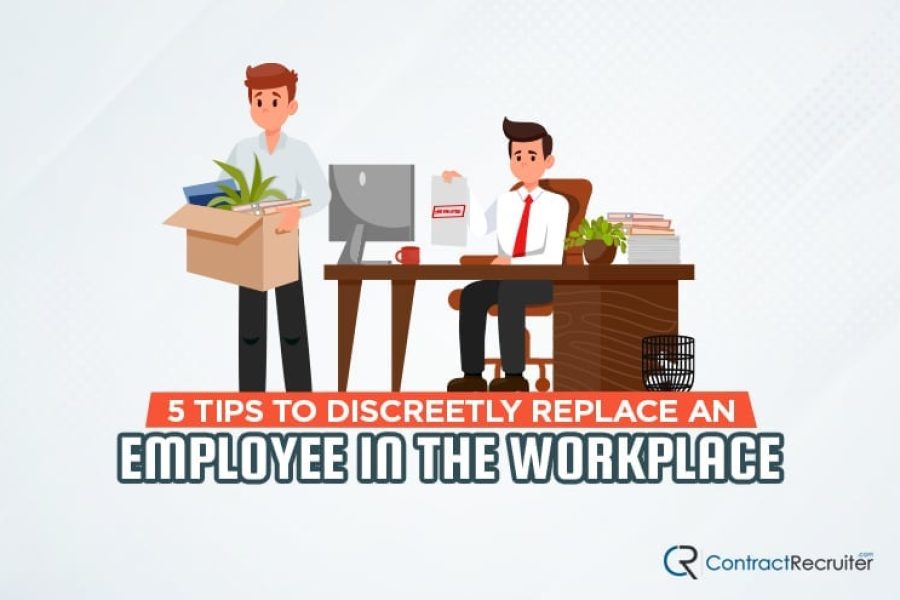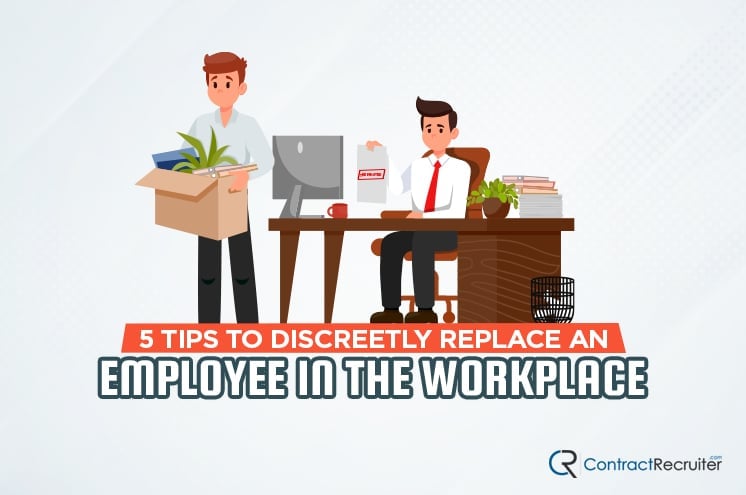No company has a perfect workforce. Sometimes employees leave, sometimes conflicts arise, and sometimes behaviors get out of hand to the extent that action must be taken. No business owner enjoys deciding to terminate someone’s employment, but now and then, it must be done.
Removing (and replacing) an employee should generally be done discreetly. Making a big event out of it can have repercussions, including other employees choosing to leave because of it. Not to mention the disruption of a public termination distracting the rest of your workers.
Before you consider terminating an employee, you should ensure you’re within your rights to do so. Sure, at-will employment laws in many states make it possible to terminate any employee, with or without cause, at any time, but that doesn’t mean you won’t open yourself up to a wrongful termination suit if you fire the wrong person at the wrong time for the wrong reason. For example:
- Terminating a female employee a short time after she mentions planning a child or planning maternity leave
- Terminating an employee who takes time off for life-saving medical treatment
- Terminating an employee for taking a day off for a religious holiday
- Terminating an employee for discussing unionization or salary information
These are all examples of wrongful termination. Even if those aren’t the stated reasons for their termination, you’re put in a bad position if they can make the case before the courts. So, a “tip #0” for this list is to ensure that you’re terminating an employee without opening yourself up to liability. Here’s a checklist for wrongful termination from the employee’s point of view; you can use it to verify they won’t have a case against you.
If you’ve verified that you need to terminate an employee for valid reasons and you want to do so discreetly, here are some tips to help you make the process smoother.
1: Determine Timing
The first thing you want to do is determine when you will be terminating the employee. There are three primary factors to consider.
The first factor is any special occasions that would make the termination especially rude. Terminating an employee on their birthday, right when a new child is born, right before the holidays, or another unfortunate timing can be considered borderline offensive. We realize that it’s not always possible to avoid such timing, but if you can, you should. Otherwise, you’ll gain a reputation as the company that “fired someone right before Christmas,” which doesn’t look good when hiring other people.
Remember, the narrative can be significant, and you’re trying to be discreet. Terminating someone will foster ill will, but they aren’t as likely to start spreading stories or leaving bad reviews everywhere they can as they would if they were terminated on a worse occasion.
The second factor is how the employee is likely to react and, more importantly, what access they have to critical information or systems. Terminating a front-line worker with few responsibilities and no significant access isn’t a sensitive or urgent matter. On the other hand, terminating a high-ranking manager, a critical IT worker, or another individual in a sensitive role can be dangerous.
Most people aren’t going to sabotage your business on their way out, nor will they attempt to steal your data, both of which are violations of contract and illegal. However, it’s best not to leave things up to chance, especially in cases where the damage might not be discovered for months or years.
The image of someone being escorted from the building by security can fuel rumors, as can a sudden termination and a temper tantrum. It can be a good idea to time their termination to avoid crowded times.
The third factor to consider is how essential their role is and, thus, how quickly they need to be replaced. A critical employee may need to be replaced immediately, such that you should have a replacement lined up when you terminate them. Other times, you may not have that luxury.
2: Create a Plan for Hiring a Replacement
The next thing you want to do is plan the employee’s replacement. Terminating an employee is disruptive enough, but leaving the rest of your team without guidance or enough workers to do the work will make it even more prominent.
Of course, you don’t want to tip your hand too early. If your employees catch wind that you’ve posted a public job listing for an already filled role, they can guess that whoever is in that role will soon be replaced. That can set off drama and cause other problems, which is precisely what you hope to avoid.
You have a few options here.
- You can seek word-of-mouth recommendations from trusted sources outside of your organization. Word can still spread, but you can use an informal hiring process to interview candidates for a role without posting the job publicly.
- You can check your existing candidate pool. If the employee you’re terminating was recently hired, or you hired for a similar role recently, you may have warm leads for others interested in the role. You can approach them about the alternative job and see if they’re interested and progress with the rest of the hiring process as usual.
- You can post a job advertisement on less prominent job boards. While your employees might regularly check Indeed or Glassdoor, they might not check a niche job board. On the other hand, they might see it immediately if they’re in that niche. It’s a risk you take if you still need to publish the job listing openly.
- You can seek internal promotion. For example, suppose you’re terminating a manager. In that case, you can promote one of their reports to their position, promote a lower-level employee to the team, and hire someone for the lower-level role, which will be much less suspicious, especially if it’s a position with a lot of churn.
- Work with a staffing agency or a recruiter to handle the actual recruitment process up to the point of signing an offer, out of view of the public eye. This option can be especially relevant if it’s a member of your HR department you’re replacing.
The key here isn’t specifically which option you pick; it’s that you choose one and implement it before terminating the employee. Otherwise, you’re left with a significant gap in productivity and people wondering what happened.
3: Inform Only Those Who Need to Know
Terminating an employee is rarely a unilateral move. You will need to have someone in finance, HR, and possibly their manager on board and aware of the situation, and potentially even “sworn to secrecy,” though you can’t necessarily enforce such a promise.
The fewer people who know about the situation, the easier it will be to control rumors and prevent the workplace game of telephone from misrepresenting the situation. In most cases, most of your employees won’t really care, but gossip travels fast and is part of workplace socialization, so it’s not always possible to prevent it.
The people who need to know are those whose duties are required when an employment change happens. You may need to talk to:
- HR, to process the paperwork and manage duties, replacements, and legal forms.
- Legal, if there’s any suspicion of wrongful termination, breach of contract, or other legal matters.
- Financial, to ensure that final paychecks are paid out, retirement accounts are handled properly, and other aspects of benefits work appropriately.
- Managers, so they know why an employee has disappeared and can prepare their team to handle the situation.
This all varies depending on who you’re terminating and for what reason. You may, for example, need a closer discussion with legal and with a victim of workplace harassment if you’re terminating someone for violation of physical boundaries or sexual harassment.
4: Have Documented Reasoning
Even employees who don’t harbor ill will against you may consider a wrongful termination suit if someone convinces them the situation could work in their favor. It’s always better to protect yourself and be safe than to be sorry you didn’t.
As such, you will need to document behaviors and build a case for termination if there’s any question about it.
Some reasons may not need this level of documentation. A workplace harassment issue, adequately investigated, is an immediate breach of contract and behavior and results in termination. All you need is proof that it happened.
In other cases, you may need a “backup” reason, such as underperformance. However, you cannot simply terminate someone for underperformance with no prior documentation. The employee may be able to pull past performance reviews where they’ve been recorded as excellent or may be able to prove that you’ve never disciplined them or given them feedback. While it’s not technically a breach of law or contract, if your employee policies state that unilateral termination isn’t possible, it can be used against you.
Documentation protects the company and is the duty of HR, the employee’s manager, and you to produce. Just make sure you’re not trying to build a case on a fraudulent basis; employees will defend themselves if necessary, and you don’t want to find out what they can do the hard way.
5: Reconsider Termination
Blind termination may be required in some cases. An employee who displays bigotry on the job or off the clock, causes a liability on social media, harasses other employees, or otherwise crosses uncrossable lines should be terminated.
On the other hand, if an employee underperforms, there may be ways you can handle the situation more gracefully.
- You may consider implementing a performance improvement plan. Sometimes, employees who underperform have reasons for it; poor training, personal issues, or unclear goals and a disconnect in communication can lead to tricky situations. You can sculpt a mediocre or poor employee into a good one by providing clear training and a clear path to improvement with tangible goals.
- Consider an incentive to quit. Sometimes, an employee you want gone might be a thorn in your side if you fire them, but they may be willing to quit. Amazon famously offers up to $5,000 for employees to quit (with caveats). Though it may look like you’re paying them off, it can effectively remove a problem employee.
- Restructure a department. If your problem employee is a manager, consider merging two similar departments and unifying them, making the problem manager redundant and cutting their position. Just make sure the teams can work together, and the manager remaining can handle it; otherwise, you will have a worse situation.
It’s always possible that there are alternatives to termination. All too often, the people in charge of HR or a business have a limited view of the available options. Moreover, personal biases against a problem employee can exacerbate a negative viewpoint and even lead to viewing an employee in a worse light than they actually are.
Sometimes termination is unavoidable. When it is, the best thing you can do is work to replace them as discreetly as possible.
Sometimes, though, being discreet isn’t the best solution. Keeping a termination on the “down-low” can fuel rumors worse than a public termination. You may need to issue a statement to the individual’s team about their termination, providing non-personal details about why it happened. Just make sure that, if you do this, you don’t phrase it in a way that could be considered a threat to the rest of the team.
How you handle terminations says a lot about your management style and how your company can handle growth, and the hurdles that come with it. Just do the best you can, learn from mistakes you make along the way, and strive to improve your processes each time they need to be executed.
Do you or your company have any questions about discreetly replacing an employee or how your company can do so appropriately? If so, please feel free to leave a comment down below, and we’ll get a conversation started! As we mentioned, it is critical to be able to do this properly to ensure the least possible adverse effects, so we would be more than happy to assist you however we can!








